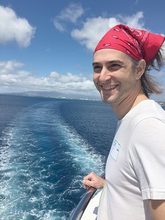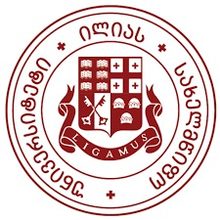Past Events
Theoretical Physics Seminar: Chris Campbell & Mathias Mikelsen
2019年4月11日 (木) 15:00Theoretical Physics Seminar.
Speaker 1: Chris Campbell (Qüantüm Šyštems), "Bright Solitons: What can we do with them"
Speaker 2: Mathias Mikelsen (Qüantüm Ŝyŝtems), "Static and dynamic phases of the Tonks-Girardeau gas in a continuum optical lattice: Superfluidity, friction, critical dynamics and stick-slip motion"
[Seminar] "The GEODE mass function and its astrophysical implications" by Dr. Kevin Croker
2019年4月10日 (水) 10:00 〜 11:00Speaker: Dr. Kevin Croker, University of Hawaii at Manoa
[Seminar] "Higher Spin Supermultiplets in Various Dimensions" by Dr. Mirian Tsulaia
2019年4月9日 (火) 15:00 〜 16:00Speaker: Dr. Mirian Tsulaia, Ilia State University
Workshop on recent developments in AdS/CFT
2019年4月2日 (火) 9:30 〜 2019年4月3日 (水) 15:00This workshop will focus on the topics mostly on the gravity side of AdS/CFT correspondence and their applications.
Theoretical Physics Seminar: Yasha Neiman & Juan-David Vasquez-Jaramillo
2019年3月28日 (木) 14:15 〜 15:30Theoretical Physics Seminar.
Speaker 1: Yasha Neiman (Quantum Gravity), "What does a spinor look like?"
Speaker 2: Juan-David Vasquez-Jaramillo (Quantum Transport and Electronic Structure Theory), "Can we control the interactions among individual magnetic dopants in metallic surfaces?"
[Seminar] "Quantum Black Hole Entropy from 4d Supersymmetric Cardy formula" by Dr. Masazumi Honda
2019年3月8日 (金) 13:30 〜 14:30Speaker: Dr. Masazumi Honda, University of Cambridge
[Seminar] "Holographic geometries for non-relativistic systems emerging from generalized flow equations" by Dr. Shuichi Yokoyama
2019年2月21日 (木) 10:30 〜 11:30Speaker: Dr. Shuichi Yokoyama, Kyoto University
[Seminar] "JTbar deformed CFT2 and string theory" by Soumangsu Chakraborty
2019年2月20日 (水) 15:00 〜 16:00Speaker: Soumangsu Chakraborty, Hebrew University of Jerusalem
Title: "JTbar deformed CFT2 and string theory"
Mathematical Physics seminar: Chern-Simons theory
2019年1月31日 (木) 15:00 〜 16:00Joint Math and Theoretical physics seminar on Chern-Simons theory, Knot invariants and Volume conjecture. Vyacheslav Lysov will be leading the discussion.
[Seminar] "Flow equation, conformal symmetry and AdS geometries" by Dr. Shuichi Yokoyama
2018年12月4日 (火) 15:00 〜 16:00Speaker: Dr. Shuichi Yokoyama, Kyoto University











